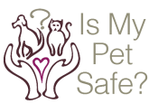Travel Crate Follow Up - The Manufacturers
In mid November, ismypetsafe.com published a three part series on the subject of pet travel crates (also available as a single PDF white paper). A few days after publication, I reached out to all those mentioned for their comments on the report as well as any thoughts they might have on the Center for Pet Safety (CPS) crash tests.

Additional questions were put to both CPS and Subaru, specific to the CPS crash testing procedures and safety features in Subaru vehicles.
| Name | Attempts | Reponses | Type | Note |
|---|---|---|---|---|
| Good Ideas(Kennebec) | 2 | 2 | ||
| MidWest Homes for Pets | 1 | 1 | ||
| MIM (Variocage) | 1 | 1 | ||
| Petcare USA/4Pets/Proline | 2 | 1 | ||
| Subaru (USA) | 4 | 2 | ||
| Gunner Kennels | 2 | 0 | ||
| Trixie Pet Products | 2 | 0 | ||
| Center For Pet Safety | 2 | 0 | ||
| Dr. Priya Prasad | 1 | 0 | CPS ‘team’ member | |
| Dr. Richard Kent | 1 | 0 | Biocore Llc | |
| MGA Research | 1 | 1 | phone | |
As there was no response from CPS, I attempted to contact other CPS ‘team’ members who likely had input into their much publicized test. Dr. Prasad, listed by CPS as an ‘Authoritative Reviewer,’ is retired from Ford Motor Co. and specializes in injury biomechanics. Dr. Prasad has his own consulting firm.
I also wanted to speak with Chris Sherwood, who CPS lists as a ‘Biomechanics/Passenger Safety Consultant,’ but was unable to find contact details. Mr. Sherwood, per the CPS website, is employed by Biocore LLC and thus I reached out to Dr. Kent of Biocore to see if he could put us in contact. Unfortunately, Dr. Kent did not respond.
The Crate Companies
Two firms acted very responsibly, not just by responding to my inquiry but by also outlining how they saw their product fit within the bigger picture of travel crates.
MidWest Homes for Pets (MidWest Life Stages)
Tara Whitehead of MidWest Homes for Pets wrote:
Thank you for providing us the opportunity to be included in your follow up. MidWest wire crates are first and foremost for use within the home. When used within vehicles, their purpose is solely to prevent driver distraction, keeping pets contained in the rear of the vehicle until arriving at one's destination. MidWest's wire crates are not crash tested and are not intended to shield a pet from harm in the event of a collision, and MidWest makes no claims as such. We extend our invitation to you to visit our headquarters in Indiana to see what protocol we use in the testing of wire crates and the safety measures we have in place to protect pets who use our product.
Tara did not dodge our earlier critique and is very up front in saying that their crates are primarily for the home and if used for transport, only prevent driver distraction. Quite simply - MidWest Homes for Pets makes a very nice, cost effective crate for indoor use. It is refreshing in this modern day to get such an open and honest response.
Good Ideas (Kennebec Kennel)
Ross Smith of Good Ideas, the maker of the Kennebec crate, gave a more detailed response and included some additional information:
We certainly appreciate the time and effort you put into the article. It involves a lot of critical thinking and digs into the true nature of the products for how safe they really are versus how well they perform in a single, arbitrary test.
[…]
We do believe in the rugged nature of the Kennebec Kennel. Its strongest asset is the single molded design which prevents the kennel from being destroyed or deteriorating during impacts or consistent forces (constant weight or pressure from the sides or top). While we don't have specific testing information on the Kennebec, products with the same wall thickness and geometry deflected the impact of a 20 lb sledge hammer with only minor permanent damage to the impact location.
We will be constructing tests that show a drop force from various weights at a height of about 12-20 ft. We would do this on all sides of the crate, including the door, to determine better safety parameters for positioning of the crate while traveling. The other strength is in the corners of the part. Unlike traditionally injected molded parts that have high tension walls, rotomolded parts have flexible walls but very rigid corners. This is why rotomolding is great for making fuel cells, because it can accommodate the expanding nature of liquids in varying temperatures and pressures. It's also a reason why it is useful for making storage containers as it can still form a solid shell but there is flex along the larger, flatter surfaces. As you stated in your abstract, this essentially creates a "crumple zone".
We should be able to provide more concrete data on the Kennebec Kennel and future crates we are about to release once we do our testing in the coming weeks.
Again, here is another manufacturer that is not afraid to address our concerns and is up front about it. The focus on making sure the crate door is thoroughly tested is encouraging and I do hope their testing methods will reflect the real world environments in which the crate will be used. Good Ideas should also strive to follow MIM’s example by posting on their website crash test video, reports with data, and documentation of the test methodology.
Petcare USA (aka 4Pets Proline Condor)
Petcare USA responded for the 4Pets Proline Condor crate by forwarding a press release dated 24 July 2015 that was sent to all US and Canadian retailers.
On the basis of the fact that the tests in accordance with ECE-R 17 only envisage one position of the dog crate, namely, anchored in the luggage compartment behind the rear seats, the Center for Pet Safety went further in another test and tested the dog crate as though the rear seats were folded down, i.e. the rear seats no longer provided any support. The dog crate was attached on four sides, but nevertheless, freely, so to speak, in the simulated rear of the vehicle. However, this test is not normally requested as standard
[…]
We still regard our product as being safe, market-conform and free from defects, the certificate of TÜV Süd is absolutely sufficient for continuing to guarantee the safety functions of our dog crate.
[…]
We will contact the Center for Pet Safety in order to clarify that the safety requirements for marketing our 4pets Proline Milan dog crate are fulfilled for Europe, the USA and Canada in every aspect. Our product is therefore neither defective nor faulty. We therefore fundamentally reject claims by purchasers, who intend to return the crates on the basis of the inspection by the Center for Pet Safety
Petcare USA/4Pets tried to strike a middle ground between three competing issues - that the CPS methods were unusual, their desire to present their crate as absolutely safe and that the crate still had issues when tested behind a seat due to material composition. The result is a statement that at times is conciliatory and at others defiant as Petcare clearly believes their TÜV Süd testing to be superior to that done by CPS. If so, Petcare should provide primary data from TÜV Süd, including video, to help assure pet parents that the crate can contain a dog in a crash while maintaining structural integrity.
MIM (Variocage)
I also received a reply from Thomas Bergsten of MIM. In the white paper, I gave high marks to their Variocage as it appears to offer the best protection for both pets and human occupants. MIM did front and rear crash testing to ECE R-17 as well as drop testing. The Variocage also survived the CPS test.
Thank you for sharing your very thorough whitepaper on safe pet travel crates, and we greatly appreciate your recognition of the superior safety design of our product.
The Variocage was specifically designed by auto safety experts to address “real world” crash scenarios, including front, rear and rollover accidents. In fact, we have many testimonials from actual crash survivors who can attest that the Variocage, with its unique compression feature mimicking the “crumple zone” safety engineering of the vehicle, performed precisely as designed – staying intact and saving the life of their pet.
We also fully agree with your conclusion that the Center for Pet Safety's test design is perplexing and does not reflect what pet owners would experience in a real-world collision.
Trixie Pet Products and Gunner Kennels
Trixie Products and Gunner Kennels did not respond to our request for comment. Gunner was the crate awarded a ‘top performer’ by CPS. However, our review of the CPS test led us to believe that the Gunner, while quite possibly a good product, had not been tested in any significant real world sense. That is not Gunner's fault per se, but given that Gunner has made use of the CPS videos and award in their own marketing, I am disappointed they did not reply. Perhaps we should not be surprised Gunner does not wish to draw any attention to questions around those tests.
Part II will cover the testing companies and Subaru of America.


